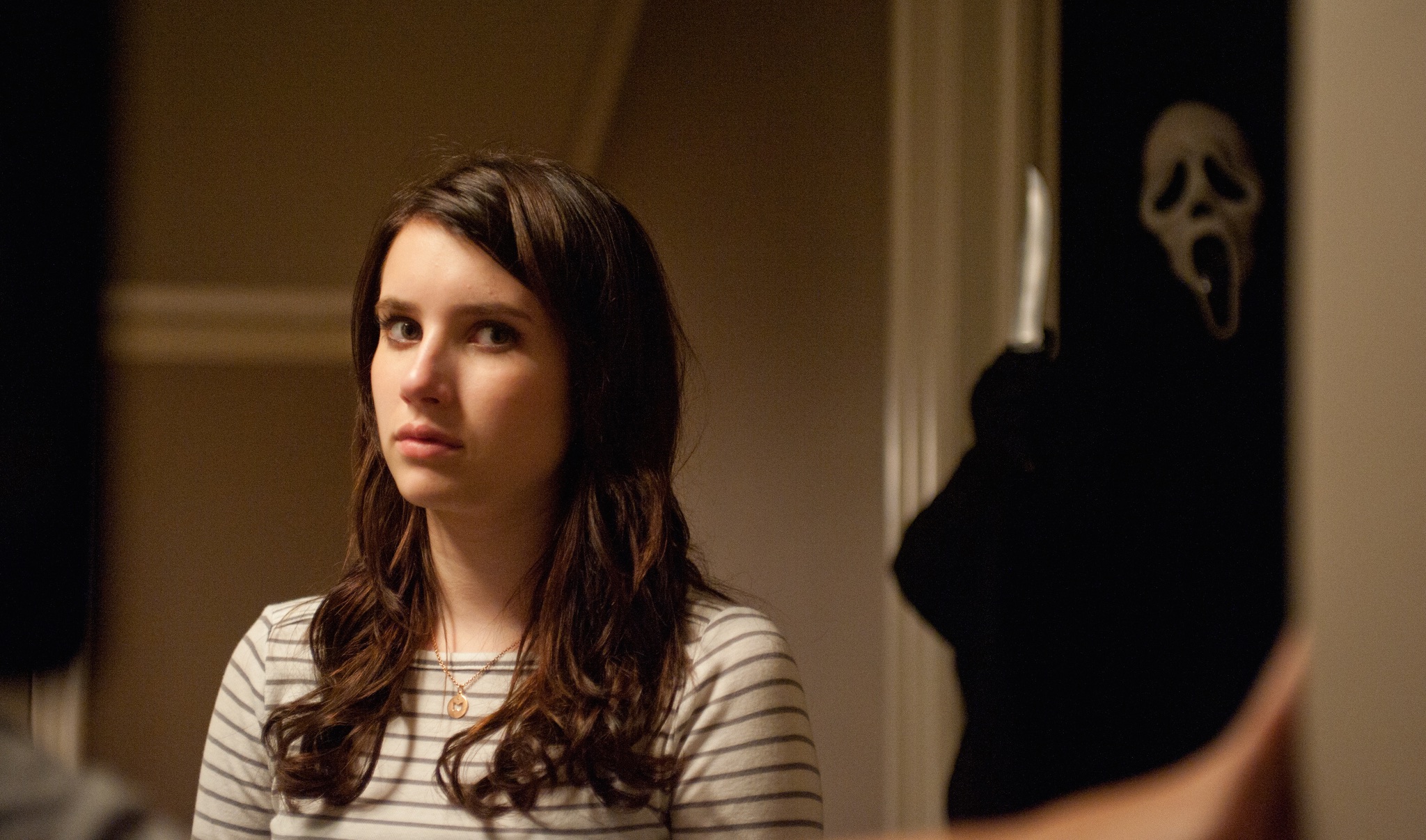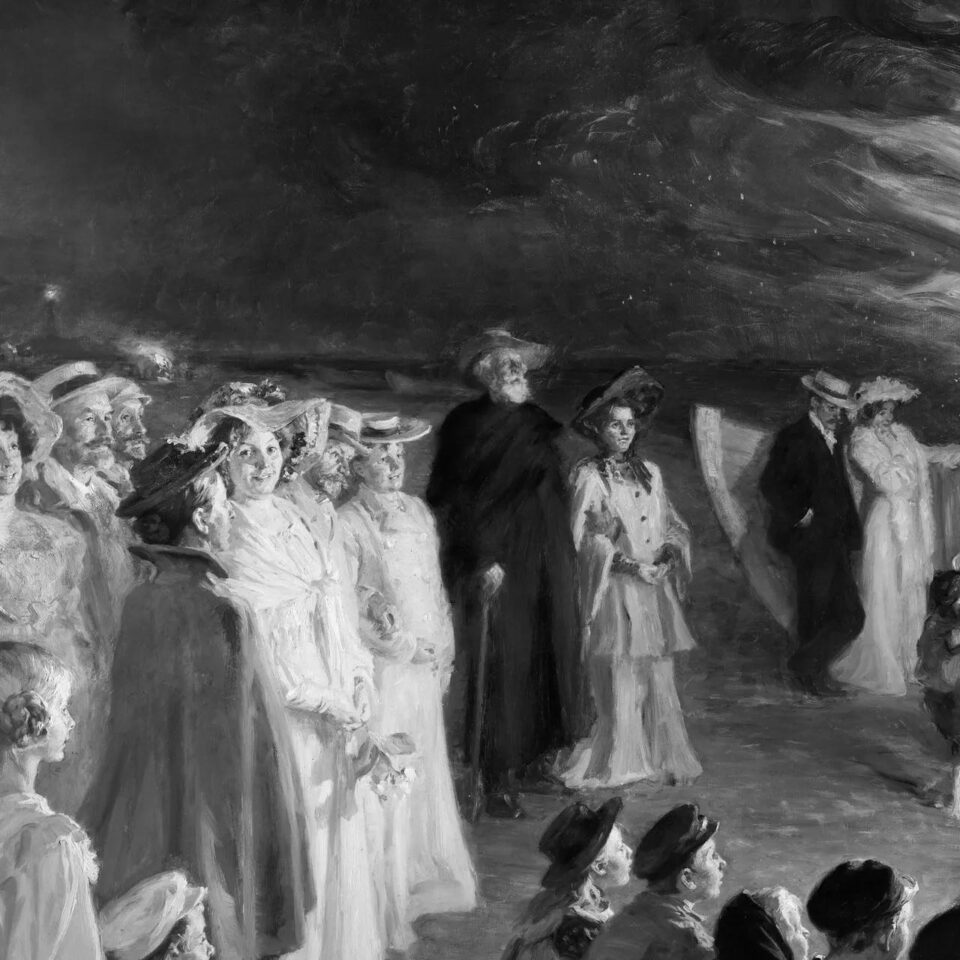Welcome to Rearview Mirror, a monthly movie column in which I re-view and then re-review a movie I have already seen under the new (and improved?) critical lens of 2021. I’m so happy you’re here.
Is the decline in quality over the course of the Scream movies an intentional meta-commentary on the diminishing returns of sequels? This is a question I am paraphrasing from a post I read some years ago on Tumblr, where every movie has already been dissected more and better than I ever could, but here we still are. It’s pretty widely accepted that the fourth Scream movie is the weakest of the bunch, but given that a fifth is currently in production, the time has come to revisit the iconic residents of Woodsboro, reassess where this film series left off, quality-wise, and where our characters were left standing, literally-wise. And for the purposes of this article, the MTV series isn’t canon, because I haven’t seen it.
Released in 2011, Scream 4, or, Scre4m, or, Screfourm, if you try to pronounce the poster, as I sometimes do, in my head, opens in the usual way: pairs of friends (two brunettes, then two blondes) answering taunting phone calls while they wax meta-textual about the state of horror filmmaking. I have to admit, the opening sequence got ahead of me. Just when I made the note that no one would talk to a creepy stranger on Facebook anymore—but that the killer’s angry tone did remind me of the harassment women on Twitter often endure—a character on-screen commented that the Facebook bit dated the in-movie movie. She said that nowadays, it would be Twitter, then a hot new platform. Touché, screenplay. And throughout the movie, young women still answer cordless home phones without checking the Caller ID, definitely a relic of suburbs past. But the new killers have also picked up the trick of using their victims’ cellphones to call out to friends. We learn there’s an app to disguise the caller’s voice. Another tidy update to the original’s very-’90s trope.
But these are surface concerns. Once we get into the meat of the story, the movie glosses over the psychological impact the events of the first three installments had on heroine Sidney Prescott. She’s written a bestselling memoir, so she’s all healed up, mentally. Instead, the wound lies within the town, which has embraced its reputation as the setting for the Stab movies. We meet Sidney’s teenage cousin Jill (Emma Roberts), her perky friend Kirby (Hayden Panettiere), and a small coterie of others at Woodsboro High including a lousy boyfriend and a couple charming pre-incels who run the movie club. And they are…fine.
There’s a glaring lack of Matthew Lillard. Nico Tortorella is no Skeet Ulrich. Maybe the point is that these new kids on the block aren’t as interesting as their Scream 1 counterparts—maybe they’re all just cannon fodder anyway, but they’re hard to care about and a little boring to watch. As is Alison Brie, bubbling over a thankless role as Sidney’s too-eager press agent.
Their half of the movie is uneven at best. When Jill and Kirby (Kirby! Her name is Kirby!) watch their sexy friend get murdered through her bedroom window, there’s a lot of clever misdirection and some good pacing. When Brie is stalked and stabbed in a parking garage, it’s downright dull. Women already know to be afraid of darkened parking garages.
The audience isn’t led to believe that anyone in particular is doing the murders until the murderer is revealed. The explanation for their motive feels hollow, because the thing about Jill the Killer is she’s really just a fucking psychopath. And that’s what psychopaths do: they kill people.
From the rest of the OG crew, only Gale (Courtney Cox) and Deputy-now-Sheriff Dewey Riley (David Arquette) have returned, because I’m pretty sure they’re the only ones who have survived. Gale is facing writer’s block until a new spate of murders piques her interest; Dewey is half-heartedly fending off the mild flirtation of a co-worker. We know he’ll never cheat, but Cox, ripping through this movie with a burst of energy it sorely needs, does seem poised to leave him and the whole town behind. In real life, Cox and Arquette would split two years after the movie’s release. On screen, it all just reads as…middle-aged people problems. Without a drop of sexual tension, where’s the fun?
The fun is gone. There is plenty of fan service. Nods to the first three movies, established in-universe as the “original trilogy,” whereas this is a spin-off into a new franchise (a fake-out, of course; at the end, only Sid is left standing, once again). There’s a bit with a garage door, and a news van becomes a crime scene. They watch Shaun of the Dead, because self-aware comedy-horror is the new classic. But there isn’t much mystery. The audience isn’t led to believe that anyone in particular is doing the murders until the murderer is revealed. The explanation for their motive, though GIFable, feels hollow, because the thing about Jill the Killer is she’s really just a fucking psychopath. And that’s what psychopaths do: they kill people.
There’s a gesture at the lingering trauma that hovers around Sidney; they call her the “angel of death” because she’s so close to so many massacres. But she never takes it to heart, so why should the audience? Even the visuals don’t work. The first three movies had a decidedly mid-budget aesthetic. In Scream 4, it’s like someone rubbed Vaseline on the lens and futzed with the hues. It’s not just digital and it’s not just a soft focus. I don’t have the vocabulary to describe the odd contrast and off-putting shine on everything, but it just…it looks bad!
When the fifth movie was first announced, I tweeted (and then deleted, because that’s how I roll) that we didn’t need to expand the Scream franchise, we needed to make Happy Death Day the new Scream. I still mostly believe that. There have been smart, funny, interesting horror movies in the past decade that could fill the gap left by Scream. Happy Death Day could become a franchise, and Ready or Not—starring Adam Brody, who has a small role in Scre4m—was the under-seen spooky counterpart to the mega-hit Knives Out. I don’t think we need to go back to Woodsboro, especially in the absence of Wes Craven, whose series this will always be.
On the other hand, I think there are interesting possibilities left with our core three. Sidney, her agent and others remind her, is forever a “famous victim.” Social media has only increased the reach of that level of celebrity in the past decade. Dewey might just be the one good cop left in America. And Gale was a trailblazer; true crime is bigger than ever, much bigger than a Stab-like series. In 2018’s Halloween (in my opinion, great, and also, spoilers ahead for that one), we re-meet Michael Myers alongside a pair of podcasters looking to profit from his grisly crimes, the way Gale certainly has, the way Sidney is accused of doing. They are quickly dispatched with, and the legacy of Myers becomes much more personal for the rest of the film…but what if it had gone another way? Scream 5 has the opportunity to look at what blogs and documentaries, instead of just horror movies, have done to the murder story-inclined audience. Or not. That’s just my pitch, take it or leave it.
Ten years old today, Scream 4 has its good moments, but not enough to prop up the limp characters and re-heated plot. Both of which are critiques bandied about in the opening scene. Which brings us back to the question: is it bad on purpose? But let me add another: when you’re watching a bad movie, does that matter? FL









